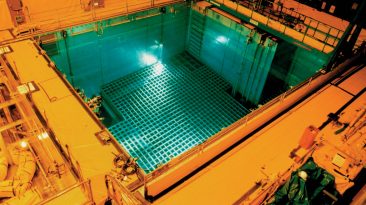Not too far from Earth is a giant space rock that has silently played host to just twelve people in its entire history. What would happen if we put our cosmic satellite to work by covering it with solar panels?
What would it take to build an enormous power plant on the Moon? How big would this facility be? And how much time would it take to finish this mega-construction?
What makes the Earth so different from the Moon? Liquid water – yes. Oxygen-rich atmosphere? – yes. Thriving life forms? – absolutely.
All these things make our planet a worse candidate than the Moon for gathering solar energy. Because the Moon has little to no atmosphere, there’s no wind, no rain, and no clouds on that space rock. Nothing prevents the Sun from constantly beaming upon the Moon.
If a lunar weatherman were to tell you the forecast, it would always be the same – a daytime high of 130°C (266°F) and sunny. Imagine how much energy we’d collect from a place where the Sun never stopped shining. But how would we get all that solar power back to Earth?
First, how would we even build a solar plant on the Moon? One Japanese company, Shimizu, already has that covered. They want to build a so-called Luna Ring. And yes, it would look just the way it sounds – a ring of solar panels spanning around the Moon.
The construction would stretch for 11,000 km (6,800 miles) along the Moon’s equator, and would reach 400 km (250 miles) in width. That’s enough to cover half of the US.
[dx_custom_adunit desktop_id=”RTK_CDE4″ mobile_id=”RTK_SUFd”]Where on Earth would we even find enough materials for assembling this enormous solar plant? Well, the answer lies outside of our planet’s natural budget.
Most of the building materials would come from the Moon itself. We’d only have to launch the initial equipment over there – just enough to start building more equipment and manufacturing lunar robots. Then a team of robots, together with a group of astronauts, would handle the rest.
For starters, they’d construct huge excavator and ore processing machines to mine the Moon. Then, they’d begin assembling solar panels from the lunar materials. With nothing but lunar soil and gravel, they’d make concrete, ceramics and solar cells.
Meanwhile, astronauts on Earth would be working on building spaceports in low Earth’s orbit to ship the remaining supplies, like hydrogen, to the Moon. Even with the most advanced technology we can think of, the construction would take at least two generations of humans to complete.
But once it’s done, we’d have a super efficient lunar powerplant, churning out power 24/7. Because there are no bad weather days on the Moon. Ever.
But what about getting that power back to Earth? Well, that’s the fun part. On the Moon, the lunar power plant would transmit solar power to the energy-converting facilities. From there, the converted power would be beamed to power-collecting stations on Earth with lasers and microwaves.
The lunar power plant would be beaming lasers at the Earth. How cool is that? Potentially, it could deliver so much energy, that we wouldn’t need any other power sources at all.
Maybe building the lunar power plant would happen at the same time we constructed a human-occupied moonbase that would one day grow into a fully-operational human colony.
Sources
- “How To Harvest Terawatts Of Solar Power On The Moon – The Crux”. 2016. The Crux. Accessed January 13 2019.
- “The Luna Ring” shimz.co.jp. Accessed January 13 2019.
- “Japanese Company Proposes To Build Solar Power Cells On The Moon To Provide Clean Energy To Earth.”. 2017. Space Industry News. Accessed January 13 2019.



























